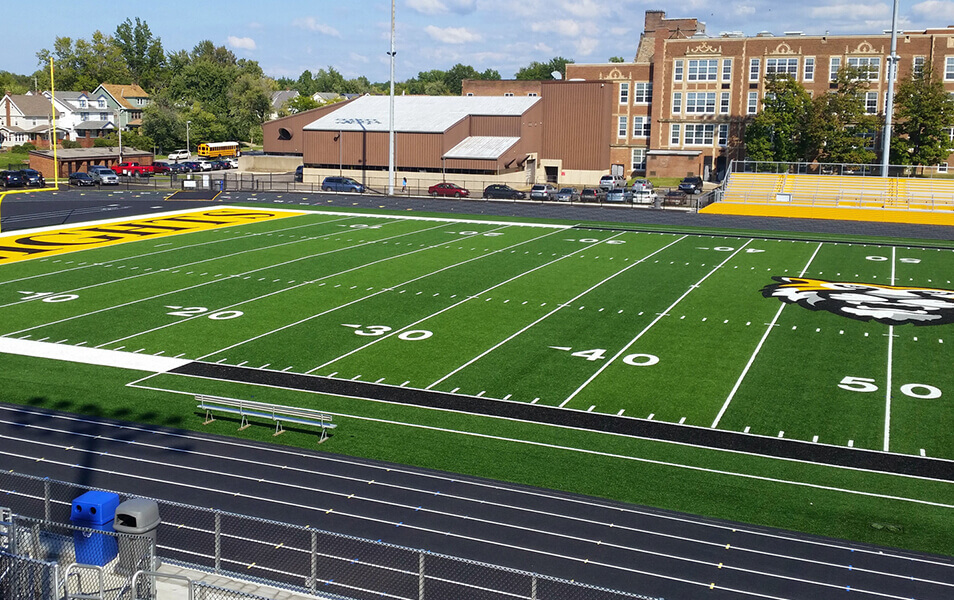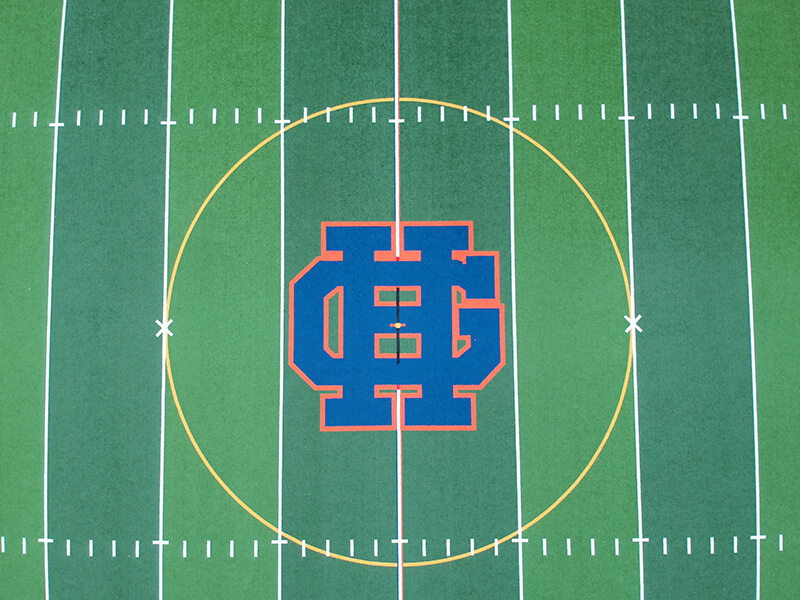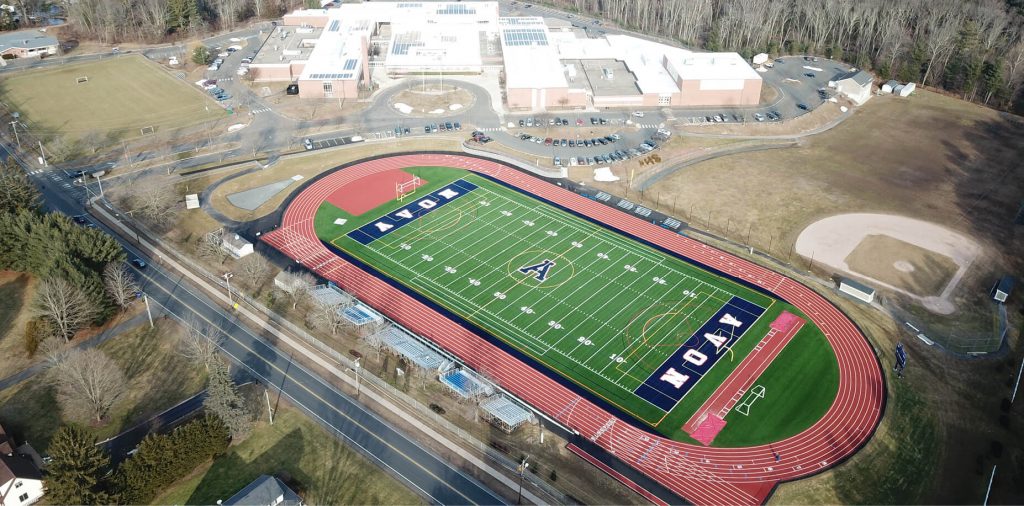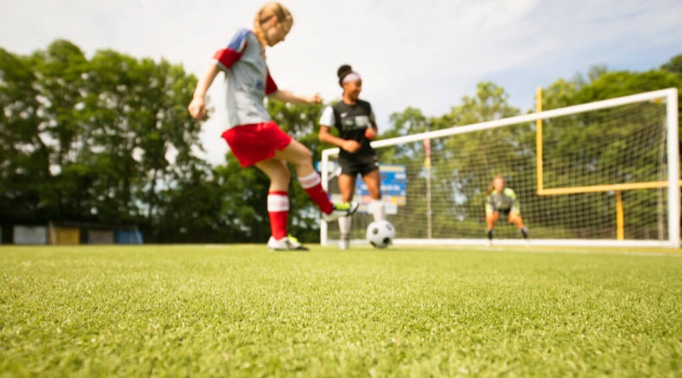
University of North Carolina Chapel Hill
Project Overview
The University of North Carolina at Chapel Hill, the nation’s oldest public university, has a long history of athletic achievement, boasting 49 NCAA Division I team national championships across eight different sports.
With a high standard of athletic performance and success, the university dedicates much of its time and effort into making sure the school’s state-of-the-art training facilities and fields are game-ready, competitive, and supportive for all its athletes.
In 2017, UNC-Chapel Hill needed to develop and expand its training facilities at Finley Athletic Complex and constructed two new synthetic turf fields, from FitFields, for its lacrosse and soccer teams using Motz’ innovative Envirofill infill. Envirofill was strategically chosen in an effort to add a layer of protection to the turf’s surface since the complex’s location is within Chapel Hill Creek’s floodplain.
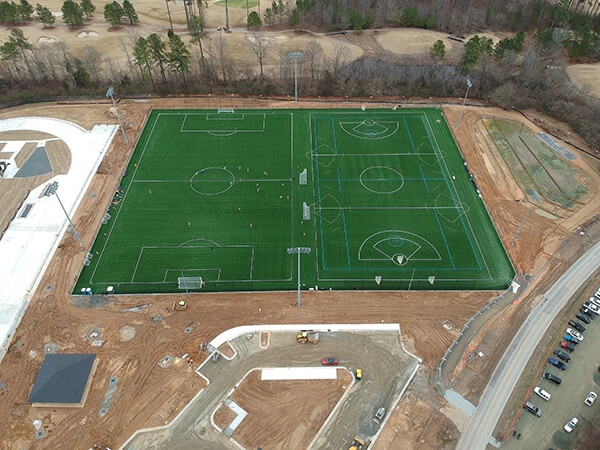
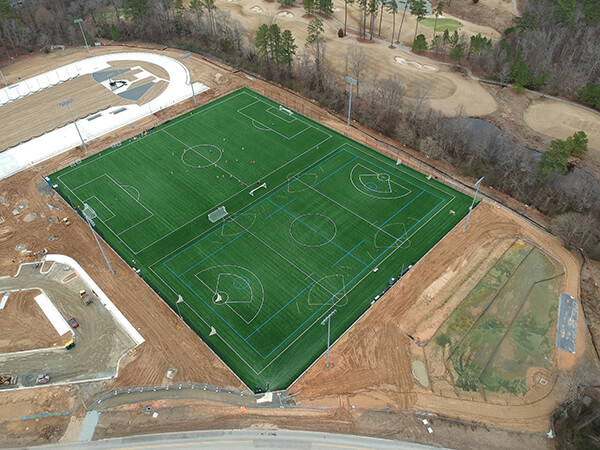
The Situation
One year later, the field’s Envirofill infill system was put to the test when Hurricane Florence came roaring into the Carolinas, dropping more than 37 inches of rain — becoming the wettest cyclone ever recorded in the southern region.
With over three feet of water covering the recently developed synthetic turf sports fields, the field’s successful recovery was largely made possible by Envirofill’s innovative technology.
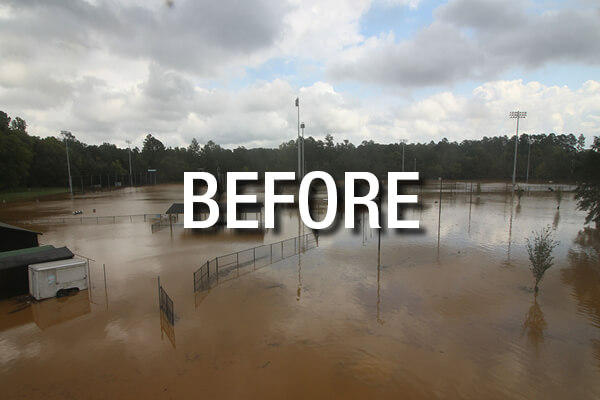
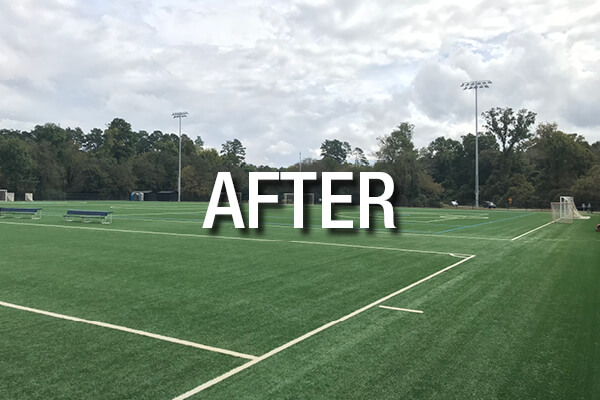
The Play
Choosing the right infill product for a synthetic turf field is one of the most important decisions to make when planning for a potential flood event. Many infills on the market have a specific gravity of less than 1.0, meaning the infill material will float, so selecting a dense infill is crucial.
Made from Texas quartz coated sand infused with Microban antimicrobial protection, Envirofill was the perfect choice for UNC-Chapel Hill. It has a high specific gravity of 2.65 that helps it stay within the synthetic turf fibers and not migrate off. Its antimicrobial technology protects against bacteria, mold, and mildew, which are all common issues presented after flooding recedes. Envirofill’s round shape also helps promote better permeability through the turf and infill, allowing rainfall to move through and out of the field faster.
For the synthetic turf sports fields at UNC-Chapel Hill, eight pounds of Envirofill were inserted into the turf, along with a 25mm shock pad and FieldTurf fiber with thatch for additional infill stabilization.
Remarkably, thanks to Envirofill’s weight and technology, the lacrosse and soccer teams were back practicing on the fields just a mere 24 hours after the flood waters receded.
The infill stayed exactly where it should… in the turf. There is no question in my mind that this system with Envirofill answered the flooding question and held up as expected.
FitFields
The Win
Superior Durability:
Rain or shine, Envirofill stands up to the elements. With its superior durability, Envirofill protects against flooding and can be used for multiple synthetic turf lifecycles with no decrease in performance. In fact, the product carries a 16-year warranty, the most extensive coverage in the industry.
Trusted Product:
Along with UNC-Chapel Hill and hundreds of other synthetic turf sports fields nationwide choosing Envirofill, it’s the most trusted and longest-lasting non-rubber turf infill on the market. For athletic programs located in hurricane and flood-prone regions, it’s the perfect selection for continued performance, safety, and durability.
Clean & Performance-Ready:
Microban® antimicrobial protection is infused into Envirofill during the manufacturing process to help prevent the growth of bacteria and microbes — crucial elements for field safety in water-prone areas.
Envirofill also provides a firm, fast and safe surface that athletes love. Its highly-rounded quartz core resists compaction so it doesn’t continue to compact over the life of a synthetic turf sports field.
Where to Buy Infill for Sports Fields
Motz offers two innovative turf infills that champion durability and performance while being low maintenance, safe and earth-friendly. Work with your contractor or field designer to request a sample or place an order. Contact us for any questions you may have about the ordering process.

